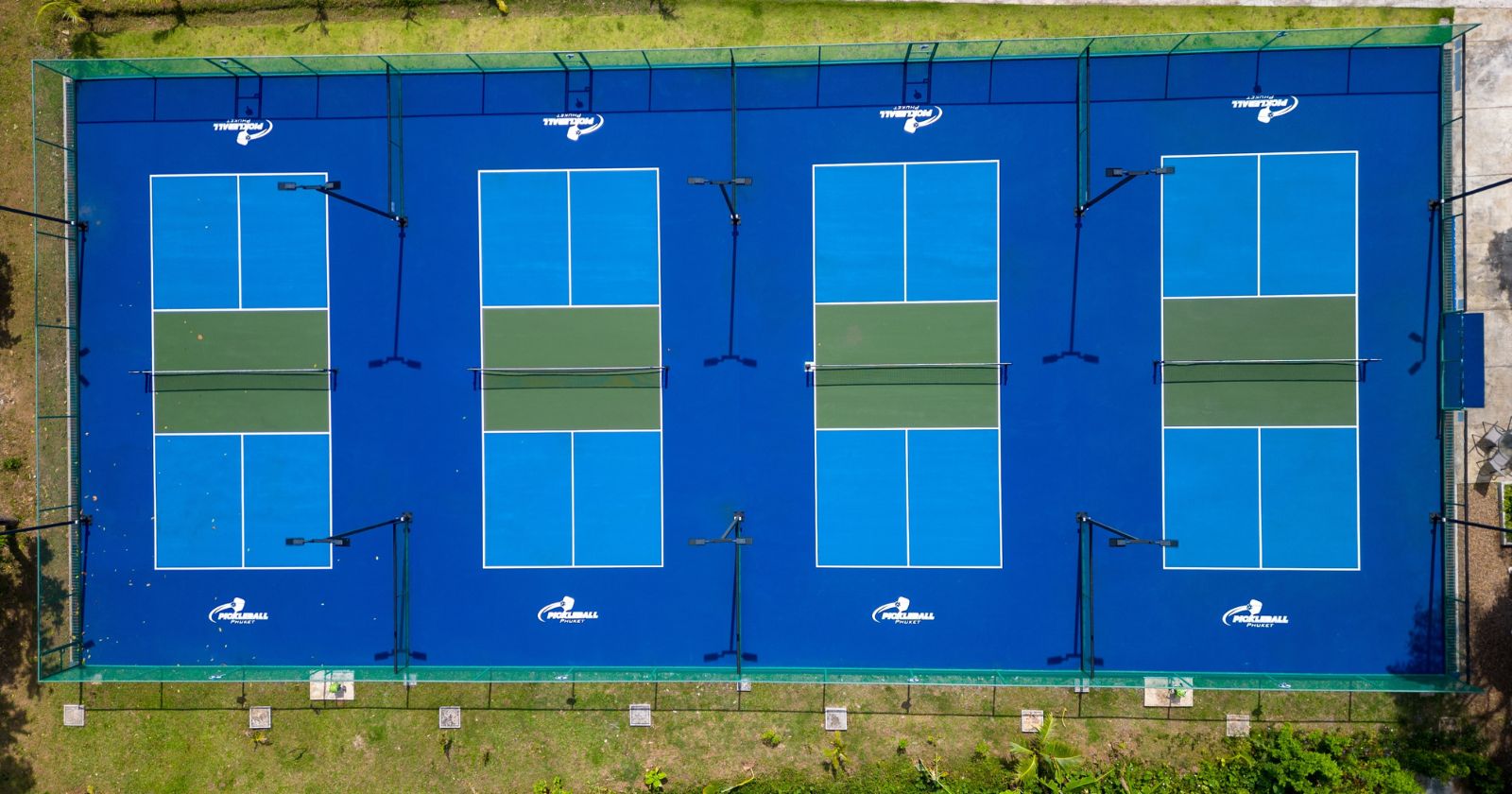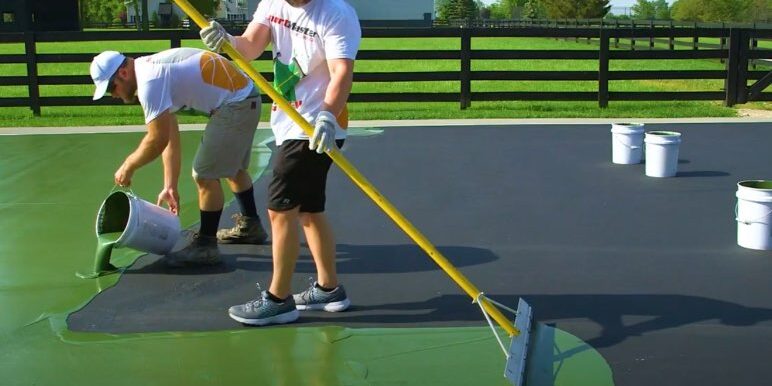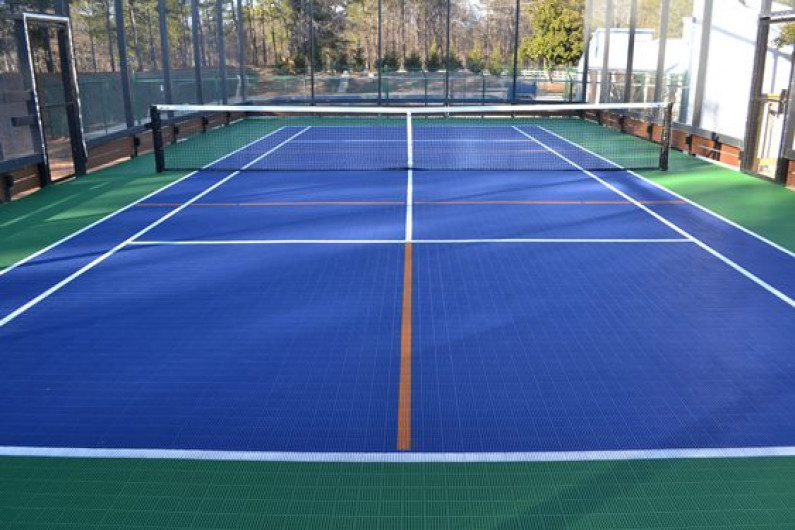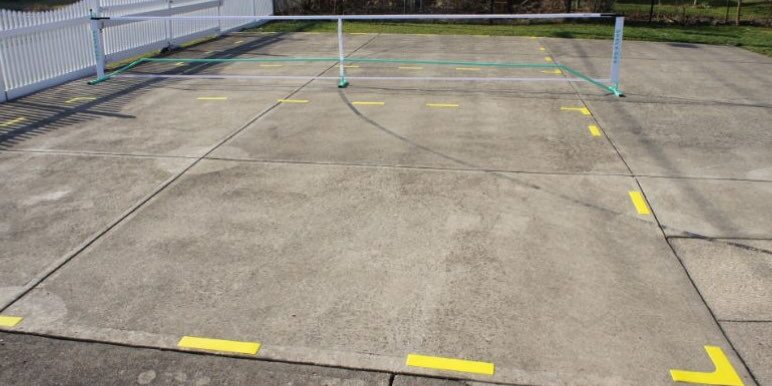What Are Pickleball Courts Made Of?
The swift rise in popularity of pickleball, a sport often described as a blend of tennis, badminton, and table tennis, has resulted in an increased interest in the construction and materials used for its courts. A pickleball court not only serves as a platform for gameplay but also significantly influences the experience and performance of its players. From recreational enthusiasts to seasoned competitors, the type of court surface plays a pivotal role in player comfort, safety, and overall enjoyment of the game. Different materials are used to create these courts, each with unique characteristics that impact durability, playability, and maintenance. In this article, we will explore the various surfaces used to construct pickleball courts, discussing their advantages, disadvantages, and the specialized treatments that enhance their performance. Whether you’re aspiring to build your own court, maintain existing facilities, or simply have an interest in the sport, understanding what pickleball courts are made of is essential.

Types of Pickleball Court Surfaces
When it comes to building pickleball courts, a variety of surfaces can be employed, each catering to different playing styles, player preferences, and environmental conditions. The main types of pickleball court surfaces include polyurethane, asphalt, concrete, and acrylic coatings. Each surface type contributes to the overall essence of the game and can influence factors like player comfort, grip, sponginess, and, ultimately, durability. In the following sections, we will delve into these different types, discussing their unique properties and benefits.

Polyurethane Surfaces
Polyurethane surfaces are often used for indoor pickleball courts, and they are renowned for their durability and cushioned feel. The unique composition of these surfaces allows them to absorb impact, making them an attractive option for players prioritizing comfort and safety. Here are some defining features of polyurethane surfaces:
- Cushioning: The cushioned nature of polyurethane is engineered to provide excellent shock absorption. This results in less stress on joints, making it an ideal option for players with knee or back issues. Unlike harder surfaces, such as concrete, players can enjoy protection from high-impact injuries, allowing for longer play sessions without fatigue.
- Durability: With a long lifespan, polyurethane surfaces resist everyday wear and tear and can endure heavy foot traffic. This durability ensures that courts remain functional and visually appealing for many years, reducing the need for constant replacements.
- Versatility: Polyurethane can be applied over various existing surfaces, including asphalt and concrete. This versatility enhances the playability of courts that may not initially provide an ideal playing experience. This adaptiveness is beneficial for facilities looking to upgrade their courts without full reconstruction.
- Cost: While polyurethane options tend to be more expensive than basic asphalt or concrete surfaces, the investment can pay off over time due to their durability and low maintenance requirements.
In summary, polyurethane surfaces meet a fine balance between comfort and performance, ideal for indoor facilities. However, selecting this material comes with considerations such as initial costs versus long-term benefits.
Asphalt Courts
Asphalt is a common choice for outdoor pickleball courts, appreciated for its affordability and durability. With consistent maintenance, asphalt courts can provide effective playing surfaces for an extended period. Here are some of the primary characteristics:
- Durability: Asphalt courts are capable of withstanding harsh weather conditions and heavy usage. Their inherent resistance to cracking makes them an excellent choice for outdoor facilities. However, it is essential to conduct regular maintenance such as seal coating to prolong the lifespan.
- Playability: Asphalt typically provides a smooth, level playing area, ensuring predictable ball bounce. However, when wet, asphalt can be slippery, which may affect gameplay and player safety. During installation, surface texture can be adjusted to improve traction.
- Cost-Effectiveness: One of the primary advantages of asphalt is the low initial investment needed for installation. The typical cost for an asphalt court can range from $6 to $10 per square meter, making it attractive for private homeowners and community facilities planning construction.
- Maintenance Needs: Routine maintenance is vital for keeping asphalt courts in peak condition. This includes crack sealing and periodic resurfacing to prolong the court’s life. Neglecting upkeep will lead to faster deterioration and potential costly repairs.
- Temperature Sensitivity: Asphalt tends to retain heat from sunlight, which may cause discomfort during hot weather. Players should factor in the weather when planning matches, especially in sweltering conditions.
With low costs and reasonable durability, asphalt remains a widespread option for outdoor pickleball courts, appealing to facilities looking for effective yet economical solutions.
Concrete Courts
Concrete courts are favored in many areas of the United States due to their robustness and durability. They tend to require specific attention to detail in construction and maintenance. Here’s a closer look:
- Durability: Properly constructed concrete courts can last for decades and endure a wide variety of environmental conditions. Their resistance to cracking and wear makes them a solid choice for heavy-use facilities.
- Stability: Concrete provides a consistent playing surface, critical for a predictable ball bounce. This quality is especially important for competitive play, where precision and control matter.
- Low Maintenance: Although some maintenance is required, such as power washing to prevent mold and occasional repairs, overall upkeep is less frequent compared to softer court types. This lower maintenance requirement translates to long-term savings.
- Hardness: One downside to concrete surfaces is their rigidity, which can create discomfort for players’ joints, especially during long matches. Many facilities deal with this issue by applying acrylic coatings that can provide a degree of cushioning.
In summary, concrete courts are durable and accommodate serious players looking for predictable surfaces. However, the hardness of the material is an essential consideration regarding player comfort, especially for those with existing joint problems.
Acrylic Coatings
Acrylic coatings are frequently applied to concrete and other surfaces to improve their performance and lifespan. These coatings offer numerous benefits, enhancing the playing condition and providing a visually appealing court. Aspects of acrylic coatings include:
- Breathability: A properly applied acrylic coating allows for vapor transmission, permitting moisture to escape and thus preventing damage. This feature is essential for outdoor courts exposed to varying weather conditions.
- Cushioning Effect: Acrylic coatings can combine with underlying surfaces to offer additional cushioning, thereby reducing the impact on players’ joints and improving comfort. Players can experience a balance of speed and softness, enhancing their overall performance.
- Traction: These coatings often contain textured materials like silica sand, creating a grip-friendly surface that minimizes the risk of slips and falls during games. Texturing is crucial, particularly for outdoor courts that may become wet.
- Visual Appeal: Acrylic coatings come in a variety of colors, allowing for customization. This visual enhancement is not only aesthetically pleasing, but also serves a functional purpose by marking the boundaries clearly.
In summary, acrylic coatings are vital for extending the life of court surfaces while enhancing their appearance and playability. The benefits of traction, cushioning, and breathability make them indispensable, particularly for concrete courts.
Characteristics of Each Surface Type
Each surface type in pickleball courts has unique characteristics that influence player experience, ranging from comfort and safety to durability and maintenance. Here’s a more detailed overview comparing these surfaces:

Durability and Maintenance Requirements
- Concrete Courts: Highly durable, lasting up to 20 years with regular maintenance. Requires cleaning and minor repairs, with resurfacing recommended every few years to maintain playability.
- Asphalt Courts: Durable but require more frequent maintenance due to cracking. Resurfacing every 3-5 years is essential to prevent major repairs.
- Polyurethane Surfaces: Known for their low maintenance and durability, these surfaces can last several years without the need for significant repairs, though regular cleaning is still necessary.
- Acrylic Coatings: Increases the lifespan of whatever surface underneath (concrete or asphalt). They require occasional reapplication, generally every 4-8 years, depending on wear and tear.
Shock Absorption and Player Comfort
- Concrete Courts: Known for their hardness, they provide less natural shock absorption, which can lead to discomfort, especially for extended play.
- Asphalt Courts : While still firm, asphalt offers a slightly more forgiving surface. It’s comparatively better for absorbing shock than concrete, providing decent protection for players’ joints.
- Polyurethane Surfaces: These provide high levels of cushioning and excellent shock absorption, making them incredibly comfortable for players, especially those with joint concerns.
- Acrylic Coatings: Adds a degree of cushioning to concrete or asphalt surfaces, but overall comfort will depend on what underlying surface is using the coating.
Grip and Traction Levels
- Concrete Courts: Generally provide good grip, especially when coated with a high-traction acrylic; however, they can become slippery when wet.
- Asphalt Courts: Typically offer decent traction, though it can become slippery in wet conditions. Proper installation can improve texture for better grip.
- Polyurethane Surfaces: Excellent traction is a hallmark of these courts, particularly in indoor settings where moisture is less of a concern.
- Acrylic Coatings: Made to enhance grip through texturing, they contribute to a safe playing environment while still allowing for consistent ball bounce.
Cost Considerations
- Concrete Courts: While initially more expensive to install, they prove to be cost-effective in the long run due to their durability and low maintenance.
- Asphalt Courts: Typically the most economical option, lower installation costs can attract homeowners and community centers, but ongoing maintenance costs should be considered.
- Polyurethane Surfaces: Generally more expensive than asphalt or basic concrete but may mitigate long-term costs due to lower maintenance requirements.
- Acrylic Coatings: Require initial investment for application, and reapplication cost, but can save money on major repairs over time due to their protective qualities.
Indoor vs. Outdoor Court Materials
Understanding the key differences between indoor and outdoor materials is crucial for choosing the right type of pickleball court.

Indoor courts are generally constructed from high-quality wood or composite materials designed to provide optimal playability and grip. Meanwhile, outdoor alternatives must be durable enough to withstand the elements, often comprising asphalt or concrete. Several factors influence the material choice, including expected usage, environmental considerations, and maintenance capabilities.
Advantages of Indoor Surfaces
- Controlled Environment: Indoor courts eliminate weather-related interruptions, allowing for consistent play regardless of external climate conditions.
- Less Maintenance: Indoor surfaces generally require less maintenance than outdoor options. Conditions like humidity may be managed easily, leading to better longevity of indoor courts.
- Healthier Play Experience: Surfaces designed for indoor play tend to be more forgiving on joints; factors like cushioning and grip tend to be better, providing a safe and comfortable playing environment.
Common Outdoor Surface Options
- Concrete: Successful outdoor surface, known for durability. However, it must be coated appropriately to ensure traction for player safety.
- Asphalt: This surface type remains popular due to affordability and reasonable performance characteristics, though maintenance is more frequent.
- Clay and Grass: While they provide softer surfaces and easier on joints, both types require high maintenance efforts and may be less suitable for locations with unpredictable weather conditions.
Environmental Impact on Surface Durability
Outdoor surfaces like asphalt and concrete have a higher environmental impact due to the manufacturing processes involved. However, natural surfaces such as grass can provide a more sustainable playing field but come with high maintenance needs that can affect local ecosystems. Balancing playability with environmental responsibility is something builders must take into consideration.
Transitioning Between Indoor and Outdoor
Transitioning players accustomed to indoor surfaces may face challenges when moving to outdoor materials. Adjustments must be made for changes in bounce and environmental factors such as wind. Similarly, maintenance practices will differ significantly, as outdoor courts require attention to weather-related wear, including debris clearance and sealing.
Specialized Surface Treatments
Specialized surface treatments can enhance the performance of pickleball courts, focusing on improving playability and safety. These treatments cover cushioning options, anti-slip features, and color coatings for increased visibility.

Cushioning Options for Better Shock Absorption
- Sport Court Surfaces: These surfaces are designed specifically for sports like pickleball, using a blend of polyurethane and rubber to create a flexible court that effectively absorbs impact.
- PickleMaster Coating: This specialized system is engineered for providing non-slip surfaces while simultaneously offering some cushioning, enhancing the overall playing experience.
Anti-Slip Treatments for Safety
- Texture and Slip Resistance: Adding texture to coatings reduces slipping risk, especially during wet conditions, improving player confidence and safety during play.
- Surface Coatings: Anti-slip surface coatings can be applied over existing courts, enhancing safety features without compromising speed or gameplay.
Color Coatings for Visibility
Color application plays a crucial role in maintaining player safety and enhancing their experience. Courts are often coated using vibrant acrylic options that not only improve visibility but can also reduce risks by clearly marking boundaries.
Maintenance Products for Court Longevity
Regular maintenance using specialized products is crucial for preserving the functionality and reliability of pickleball courts. This may include:
- Regular Cleaning: Remove dirt and debris to maintain surfaces, thereby prolonging the efficacy of coatings.
- Surface Resurfacing: Routine resurfacing keeps the play area safe and functional, prolonging longevity.
- Repairing Damage: Quick, efficient repairs to cracks can help prevent larger problems.
Caring for court surfaces is vital to ensure they remain playable while maintaining safety standards.
Conclusion
In conclusion, the construction and materials of pickleball courts significantly impact player experience and performance. With options like polyurethane, asphalt, and concrete, each material presents unique characteristics that enhance or diminish aspects of gameplay. Understanding the nuanced differences between these options including their respective maintenance needs, durability, and comfort can empower players and facility managers to make informed decisions. The choice of surface is not merely about cost; rather, it encompasses considerations of player safety, comfort, environmental impact, and, ultimately, enjoyment. Whether constructing a new court or maintaining an existing one, the focus should always be on optimizing the playing experience while balancing practicality and aesthetics.
